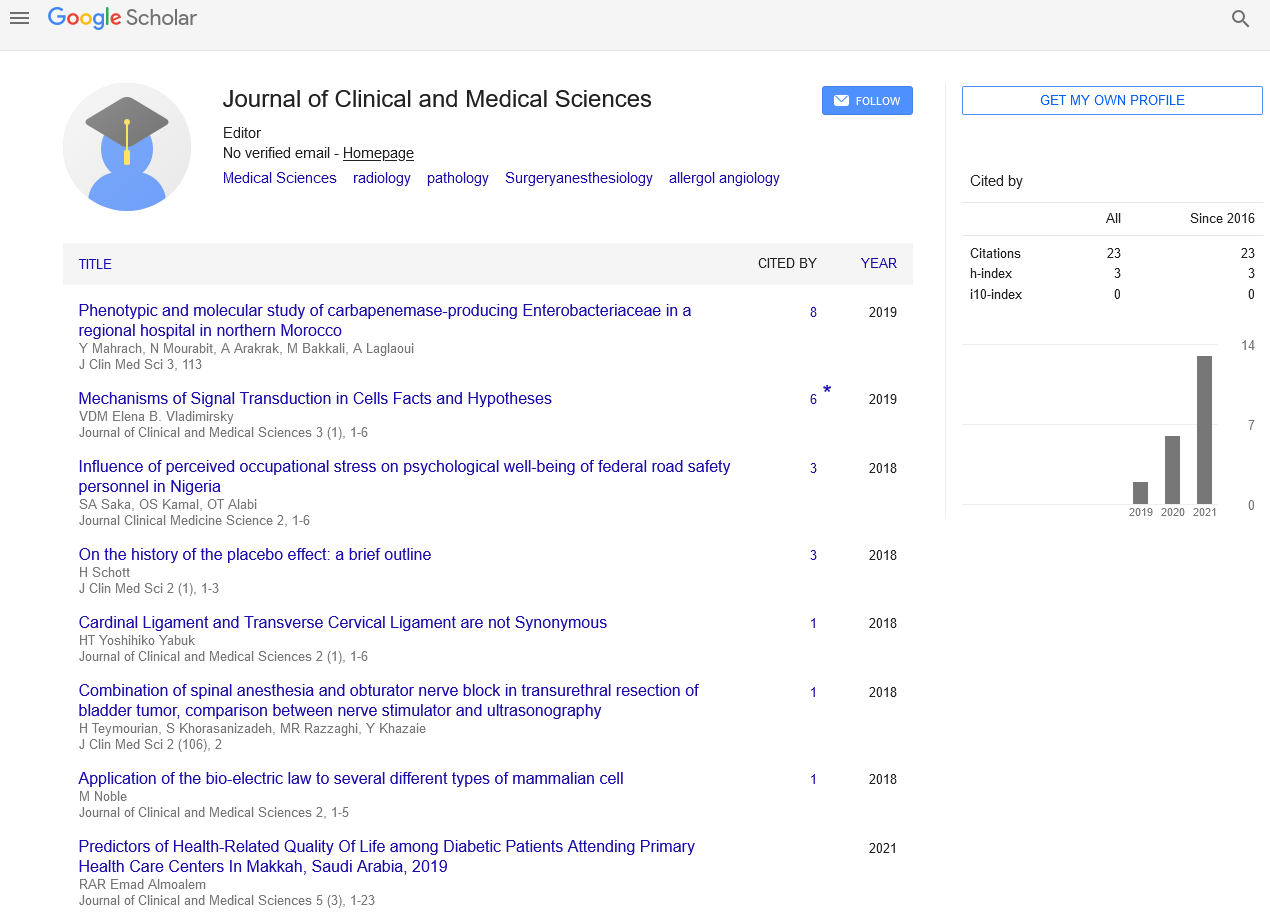Indexed In
- Euro Pub
- Google Scholar
Useful Links
Share This Page
Journal Flyer

Open Access Journals
- Agri and Aquaculture
- Biochemistry
- Bioinformatics & Systems Biology
- Business & Management
- Chemistry
- Clinical Sciences
- Engineering
- Food & Nutrition
- General Science
- Genetics & Molecular Biology
- Immunology & Microbiology
- Medical Sciences
- Neuroscience & Psychology
- Nursing & Health Care
- Pharmaceutical Sciences
Abstract
Application of the Bio-electric Law to Several Different Types of Mammalian Cell
According to the bio-electric law, all living cells have a negative trans-membrane potential produced by mitochondrial generation of electrons, the mitochondria having an even more negative intra-organellar potential. A change in trans-membrane potential initiates functional activation. Neural dendrites, the sino-atrial and ventricular cells of the heart, the vascular smooth muscle cell, the vascular endothelial cell, red blood cells, leukocytes, platelets, liver cells, adipocytes, brown fat cells and retinal cells have been studied. There are at least 3 types of electron movement. Complete depolarization and repolarization occurs in nerve, skeletal muscle and heart, whereas variable changes in trans-membrane potential occur in vascular smooth muscle cells and non-contracting cells. The retinal cell is unique in that activation is associated with hyperpolarization. It is concluded that study of electron movements within living cells requires much further attention in physiological research.

